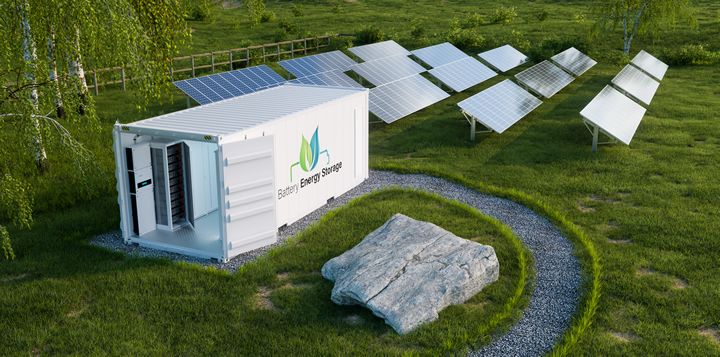By improving grid efficiency and reducing the need for costly infrastructure upgrades, BESS can lower overall energy costs for consumers. Additionally, battery projects can create manufacturing, installation, and maintenance jobs, contributing to the growth of a clean energy economy.
 The Impact of Battery Energy Storage on the Clean Energy Transition
The Impact of Battery Energy Storage on the Clean Energy Transition

Manoj Gopu, Engineer | Energy Storage Expert
The clean energy transition is one of the most pressing challenges of the 21st century.
This transition refers to the global shift from fossil fuels to renewable energy sources such as wind, solar, and hydropower. This transition is driven by the urgent need to reduce greenhouse gas emissions, mitigate climate change, and achieve energy security. However, the variability of renewable energy sources presents a significant challenge: the sun doesn’t always shine, and the wind doesn’t always blow.
Battery energy storage systems (BESS) are able to address this challenge effectively. They are large-scale technologies designed to store and release electricity when needed. These systems are changing how power grids operate by ensuring that clean energy can be available even when the sun isn’t shining or the wind isn’t blowing. Their impact goes beyond simple energy storage, influencing grid stability, reducing reliance on fossil fuels, and enabling greater integration of renewable resources into national grids.
At the heart of the clean energy transition is the need for reliability. Traditional energy grids were designed around fossil fuel plants that could be turned on or off to meet demand. Renewables, by contrast, generate power based on environmental conditions, making it harder to match supply with demand. Battery storage helps smooth out these fluctuations by capturing excess energy when generation exceeds demand and discharging it when energy demand is high.
Beyond stabilizing power grids, battery storage also plays a pivotal role in reducing reliance on fossil fuel-based peaker plants. Traditionally, when energy demand spikes—like during summer heatwaves—utilities would turn to peaker plants, often powered by natural gas or oil. These plants are expensive to operate and emit significant amounts of greenhouse gases. They also offer economic advantages. By improving grid efficiency and reducing the need for costly infrastructure upgrades, BESS can lower overall energy costs for consumers. Additionally, battery projects can create manufacturing, installation, and maintenance jobs, contributing to the growth of a clean energy economy.
The deployment of BESS has already demonstrated substantial benefits in various contexts:
- Australia’s Hornsdale Power Reserve: Known as the “Tesla Big Battery,” this facility provides frequency regulation, supports renewable energy integration, and delivers cost savings to the grid. It has become a global benchmark for large-scale BESS projects.
- California’s Energy Storage Initiatives: As part of its aggressive renewable energy goals, California has deployed BESS to address peak demand challenges, mitigate solar and wind intermittency, and improve grid reliability.
- Rural Electrification in Africa: In many African nations, BESS-powered microgrids are providing clean and affordable electricity to remote communities, fostering economic development and improving quality of life.
While the benefits of BESS are clear, several challenges must be addressed to fully realize their potential:
- High Initial Costs: The upfront investment for BESS infrastructure can be prohibitive, though costs are declining rapidly due to technological advancements and economies of scale.
- Regulatory Barriers: Policymakers must create supportive frameworks that incentivize BESS adoption and integration into energy markets.
- Technology Development: While lithium-ion batteries dominate the market, alternative technologies such as flow batteries, solid-state batteries, and thermal storage need further development to address limitations in energy density, longevity, and sustainability.
- End-of-Life Management: Recycling and disposal of batteries are critical to minimizing environmental impacts and ensuring resource sustainability.
As the clean energy transition accelerates, battery energy storage systems will continue to play a foundational role. They are not just a technological upgrade but a fundamental enabler of a sustainable energy future. By improving grid reliability, facilitating the integration of renewables, and reducing reliance on fossil fuels, BESS can help create a cleaner, more resilient energy landscape for future generations.
Battery Energy Storage Systems are at the heart of the clean energy transition, addressing the challenges of renewable energy integration, grid stability, and energy access. By enabling a reliable, resilient, and sustainable energy system, BESS is paving the way for a future free from fossil fuels. As technology advances and supportive policies proliferate, the impact of BESS on the global energy landscape will only continue to grow, driving progress toward a cleaner, greener, and more equitable world.
Manoj Reddy Gopu is a seasoned engineering leader specializing in energy storage and renewable energy systems. As Director of Engineering, he has spearheaded the development and execution of large-scale Battery Energy Storage Systems (BESS) and has extensive experience with SCADA and Energy Management Systems in operational technology. His career encompasses roles such as Senior Applications Engineer in renewables and Project Manager in control systems, underscoring his comprehensive expertise in the energy sector.
The content & opinions in this article are the author’s and do not necessarily represent the views of AltEnergyMag
Comments (0)
This post does not have any comments. Be the first to leave a comment below.
Featured Product

